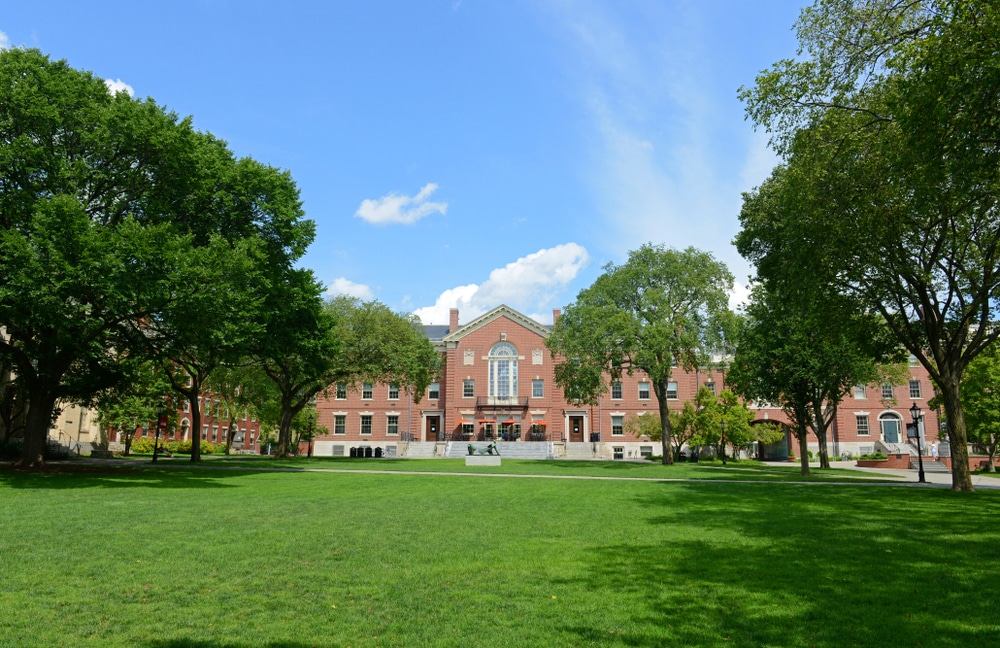How Big is Brown University?
Brown University, located in Providence, Rhode Island, is renowned for its prestigious reputation and rich academic tradition. As part of understanding this esteemed institution, it’s essential to explore the size and layout of its campus.
This article provides an in-depth overview of how big Brown University is in terms of its layout and the green spaces it offers. Additionally, it delves into the significant role campus size plays in student life, pointing out how it influences student activities and contributes to the community feel at Brown University.
Understanding the Size of Brown University
Brown University, located in Providence, Rhode Island, boasts a campus that stretches across an impressive area of 143 acres. This vast expanse of land provides ample space for the university’s academic buildings, residential facilities, and recreational areas, creating a vibrant and dynamic environment for its students.
Walking through the campus, you’ll immerse yourself in a bustling academic atmosphere. The various academic buildings house state-of-the-art classrooms, laboratories, and research facilities where students engage in rigorous intellectual pursuits. From the iconic John Hay Library to the cutting-edge laboratories in the Sciences Library, Brown University offers a wide range of resources to support its students’ academic endeavors.
But Brown University is not just about academics. The campus also has diverse residential facilities where students live and form lasting friendships. From traditional dormitories to apartment-style housing, the university provides a range of options to suit students’ preferences and needs. These residential communities foster a sense of belonging and create opportunities for students to engage in meaningful social interactions.
The Total Area of the Brown University Campus
Stretching across an impressive area of 143 acres, Brown University’s campus presents a thriving academic environment bustling with activity. This extensive space accommodates numerous academic buildings, residential facilities, and recreational areas that contribute to the holistic development of its student body.
When it comes to recreational areas, Brown University leaves no stone unturned. The campus features expansive green spaces, perfect for picnics, outdoor games, or simply enjoying the beauty of nature. Students can be seen playing frisbee on the Main Green, practicing yoga on the Quiet Green, or lounging under the shade of trees in the Pembroke Field. These outdoor spaces provide a much-needed respite from the demands of academic life and encourage students to lead a balanced lifestyle.
In addition to the green spaces, Brown University also boasts impressive athletic facilities. The Nelson Fitness Center offers various exercise equipment, fitness classes, and recreational activities to cater to students’ diverse interests. Whether you’re a sports enthusiast looking to join a club team or someone who enjoys a casual workout, Brown University has something for everyone.
Comparing Brown University to Other Ivy League Schools
When evaluating the size of Brown University, it’s interesting to compare it to other prestigious Ivy League schools. While it is not the most extensive campus, Brown University prides itself on creating an intimate environment that fosters close-knit relationships among its diverse student population.
Unlike some of its Ivy League counterparts, Brown University intentionally keeps its student body relatively small. This deliberate choice allows for more personalized interactions between students and faculty, creating a supportive and collaborative academic community. Professors at Brown University are known for their accessibility and willingness to engage with students outside the classroom, further enhancing the educational experience.
Furthermore, Brown University’s emphasis on interdisciplinary studies and open curriculum encourages students to explore various academic interests. This flexibility, combined with the university’s small size, fosters a sense of intellectual curiosity and promotes cross-disciplinary collaboration among students from multiple backgrounds.
While Brown University may not have the largest campus among Ivy League schools, its commitment to creating a vibrant and inclusive community sets it apart. The campus may be smaller, but it is big on opportunities for personal growth, academic exploration, and meaningful connections.
The Layout of the Brown University Campus
Brown University’s campus encompasses a harmonious blend of historic and modern architecture, providing a vibrant setting for academic pursuits. The academic buildings, from colonial-style structures to contemporary facilities, house the university’s prestigious schools and departments. With well-equipped classrooms, state-of-the-art laboratories, and collaborative study spaces, these buildings foster an atmosphere that nurtures academic excellence.
One notable academic building on campus is the Pembroke Hall, a beautiful colonial-style structure that dates back to the 18th century. With its grand entrance and intricate architectural details, Pembroke Hall symbolizes Brown University’s rich history. Inside, students can find spacious lecture halls where renowned professors deliver captivating lectures that ignite intellectual curiosity.
Moreover, the campus features advanced research centers and libraries, ensuring students can access resources supporting their intellectual growth. The Sciences Library, for instance, is a hub of knowledge and innovation. Its vast collection of books, journals, and digital resources caters to various academic disciplines, from biology to physics. Students often find themselves immersed in the library’s serene atmosphere, surrounded by shelves filled with wisdom and inspiration.
Another prominent library on campus is the John D. Rockefeller Jr. Library, a modern architectural marvel that houses an extensive collection of rare books and manuscripts. With its sleek design and panoramic views of the campus, the library provides a tranquil space for students to engage in deep research and contemplation. The library’s quiet study areas and comfortable seating make it an ideal spot for students to delve into their studies and explore new ideas.
Residential and Dining Spaces
Living on campus at Brown University allows students to immerse themselves fully in the university experience. The dormitory buildings near academic facilities provide a sense of community and enable students to form lasting connections. These residential spaces reflect Brown University’s commitment to fostering a supportive and inclusive campus culture.
One of the residential buildings, Andrews Hall, is a charming red-brick structure that exudes warmth and comfort. Its cozy common areas and spacious bedrooms create a welcoming environment where students can relax and unwind after a long day of classes. The hall’s communal kitchen encourages students to come together and share meals, fostering a sense of camaraderie and friendship.
When it comes to dining, Brown University boasts a variety of options that cater to diverse tastes. The Ratty, the university’s main dining hall, is a bustling hub of culinary delights. With its vibrant atmosphere and diverse menu, students can explore various cuisines worldwide. From made-to-order omelets for breakfast to gourmet pizzas for dinner, the Ratty ensures that students never go hungry.
For those seeking a more intimate dining experience, Brown University offers several cafes scattered across campus. The Blue Room, a cozy café in the heart of the campus, is a popular spot for students to grab a quick bite or enjoy a leisurely cup of coffee. The Blue Room provides a serene escape from the academic hustle and bustle with its comfortable seating and relaxed ambiance.
The carefully curated menus at Brown University’s dining facilities also prioritize health and sustainability. The university sources ingredients from local farms and emphasizes organic and seasonal produce. This commitment to sustainable dining ensures that students can access nourishing food that fuels their minds and bodies. Whether it’s a hearty salad or a wholesome grain bowl, students can indulge in delicious meals that support their overall well-being.
The Green Spaces of Brown University
Parks and Recreation Areas
Amidst the hustle and bustle of academic life, Brown University offers abundant green spaces where students can relax, rejuvenate, and appreciate nature. The campus boasts a collection of parks and recreation areas that serve as tranquil retreats. Students can study under the shade of magnificent trees, engage in recreational activities, or enjoy these spaces’ serenity.
One of the most popular green spaces on campus is the Main Green, a sprawling lawn surrounded by historic buildings. This picturesque area is a hub of activity, with students lounging on blankets, playing frisbee, and soaking up the sun. The Main Green is also home to various events and performances, adding to its vibrant atmosphere.
The Quiet Green is the perfect spot for those seeking a quieter escape. Tucked away in a secluded corner of the campus, this hidden gem offers a peaceful retreat for students looking to unwind. The Quiet Green features lush gardens, benches, and a tranquil pond, creating an oasis of calm amidst the bustling campus life.
In addition to the Main Green and the Quiet Green, Brown University boasts several other green spaces that cater to different preferences and needs. The Science Green, located near the science buildings, provides a serene environment for students studying scientific disciplines. Its proximity to the laboratories and research facilities makes it an ideal outdoor study spot for science enthusiasts.
Another notable green space is the Riverwalk, a scenic pathway that winds along the banks of the Seekonk River. This picturesque trail offers breathtaking water views, lush vegetation, and wildlife. Students often take leisurely walks or go for a jog along the Riverwalk, immersing themselves in the beauty of nature while getting some exercise.
Environmental Sustainability at Brown University
Brown University is deeply committed to environmental sustainability. The university’s green spaces are not only places of solace but also serve as a testament to its dedication to preserving the environment. Brown takes pride in implementing sustainable practices, such as recycling programs, energy-efficient buildings, and initiatives to reduce carbon emissions.
One of the notable sustainability initiatives at Brown is the Green Building Program. This program focuses on constructing and renovating buildings using environmentally friendly materials and energy-efficient designs. The university has successfully achieved LEED (Leadership in Energy and Environmental Design) certification for several buildings, showcasing its commitment to sustainable architecture.
In addition to sustainable buildings, Brown University actively promotes recycling and waste reduction on campus. The university provides accessible recycling bins throughout the campus, encouraging students and staff to recycle paper, plastic, glass, and other materials. Brown also organizes educational campaigns and workshops to raise awareness about recycling and sustainable waste management.
Furthermore, Brown University has implemented various measures to reduce carbon emissions and promote sustainable transportation. The university encourages students and staff to use alternative modes of transportation, such as biking, walking, or public transport. Brown also provides bike racks and bike-sharing programs to make cycling a convenient and eco-friendly option for commuting.
Brown University actively engages in research and education related to environmental issues as part of its commitment to ecological sustainability. The university offers various courses and programs on environmental studies, ecology, and sustainable development. Students can learn about pressing environmental challenges and contribute to innovative solutions through research and community engagement.
Future Expansion Plans of Brown University
Proposed Construction Projects
Looking ahead, Brown University has several ambitious expansion plans in the pipeline. These plans aim to enhance the university’s facilities, accommodate growing student enrollment, and enrich the campus experience. Proposed construction projects include the development of new academic buildings, upgraded research facilities, and enhanced residential spaces.
Impact on Campus Size and Layout
As Brown University expands, careful consideration is given to maintaining the harmonious balance between conserving open green spaces and meeting the evolving needs of the university community. While these planned expansions may alter the campus size and layout, their purpose is to improve and provide cutting-edge resources to students and faculty continually.
The Role of Campus Size in Student Life
How Campus Size Influences Student Activities
The size of a university campus significantly impacts the range of activities available to students. The manageable campus size at Brown University allows for easy navigation between buildings, promoting accessibility and fostering student engagement.
With facilities nearby, students can transit efficiently between classes, research centers, and extracurricular activities. This proximity enhances their ability to participate actively in academic, social, and cultural pursuits, contributing to a well-rounded university experience.
The Effect of Campus Size on Community Feel at Brown University
Brown University’s campus size is crucial in fostering a close-knit community. A smaller campus cultivates a supportive environment where students forge connections with peers, faculty members, and university staff.
Students often encounter familiar faces as they move around campus, fostering a sense of belonging and camaraderie. The manageable size creates an inclusive community that promotes collaboration, shared experiences, and lifelong connections.
In conclusion, Brown University’s campus size, layout, green spaces, and future expansion plans all contribute to the unique educational experience it offers. By thoughtfully designing spaces that foster academic growth, nurturing communal areas for relaxation and recreation, and prioritizing sustainability, Brown University showcases its commitment to creating an enriching environment while maintaining an intimate and vibrant campus atmosphere. The size of the campus plays a pivotal role in fostering student engagement, offering a close community that nurtures personal and intellectual development.
Ready to Aim for the Ivy League? Let AdmissionSight Guide Your Journey!
You’ve just delved deep into the multifaceted world of Brown University, exploring its size in terms of campus, academics, student life, and global impact. But understanding the magnitude of an Ivy League institution is just the tip of the iceberg when it comes to college admissions.
Why Navigate This Complex Process Alone?
AdmissionSight specializes in helping students like you not just aim but hit the mark when it comes to Ivy League and other top-tier college admissions. Our expertise ranges from personalized academic planning to crafting compelling essays that resonate with admissions officers.
What Sets Us Apart?
- Personalized Consultations: Every student is unique, and so should their college admissions strategy.
- In-Depth Essay Reviews: Our skilled copywriters will ensure your essays are error-free, deeply insightful, and persuasive.
- Data-Driven Approach: We use real-time data and analytics to optimize your college application strategy, increasing your chances of admission.
- Take the Next Step
Don’t leave your college future to chance. Schedule a free consultation with AdmissionSight today and take the first step toward turning your Ivy League dreams into reality.









































